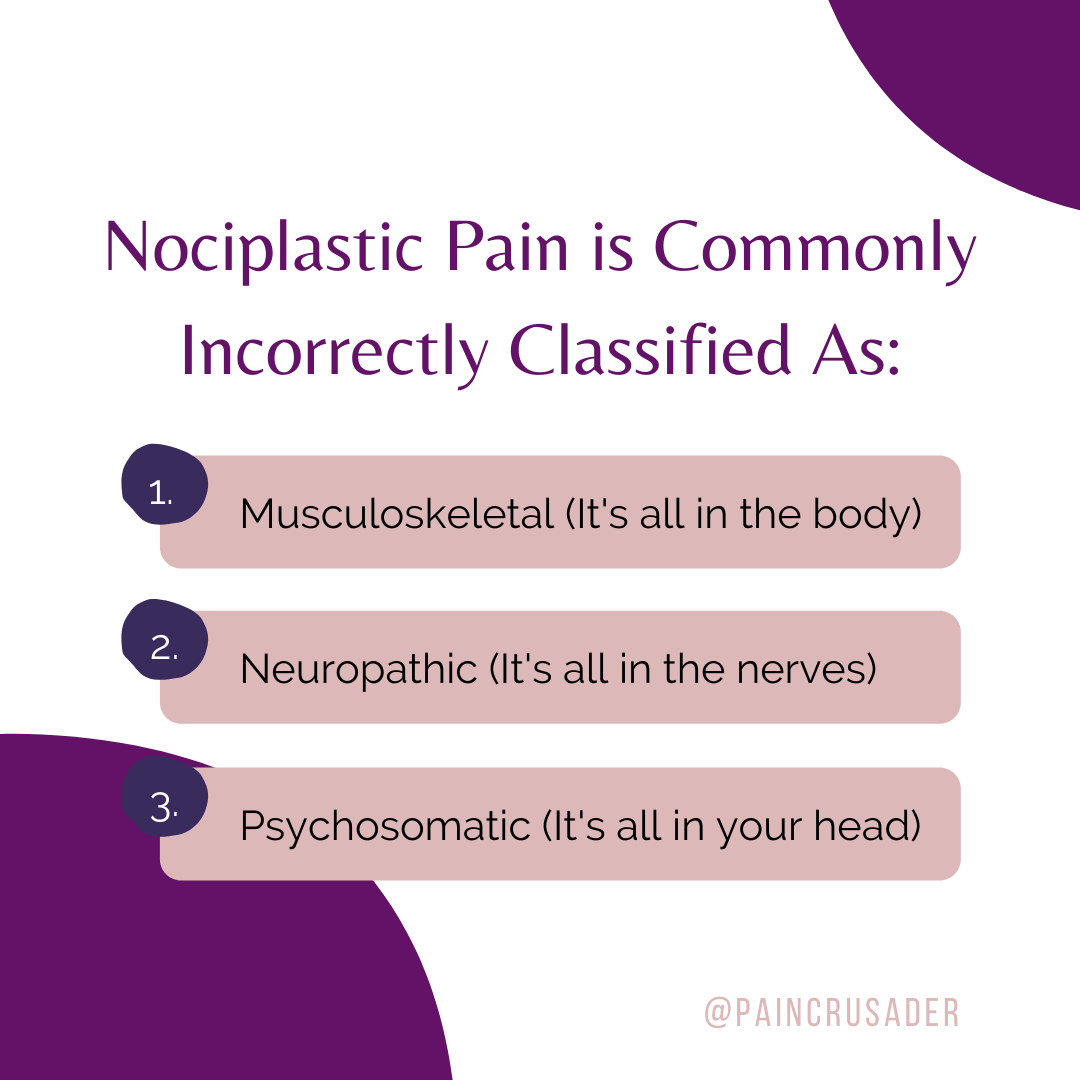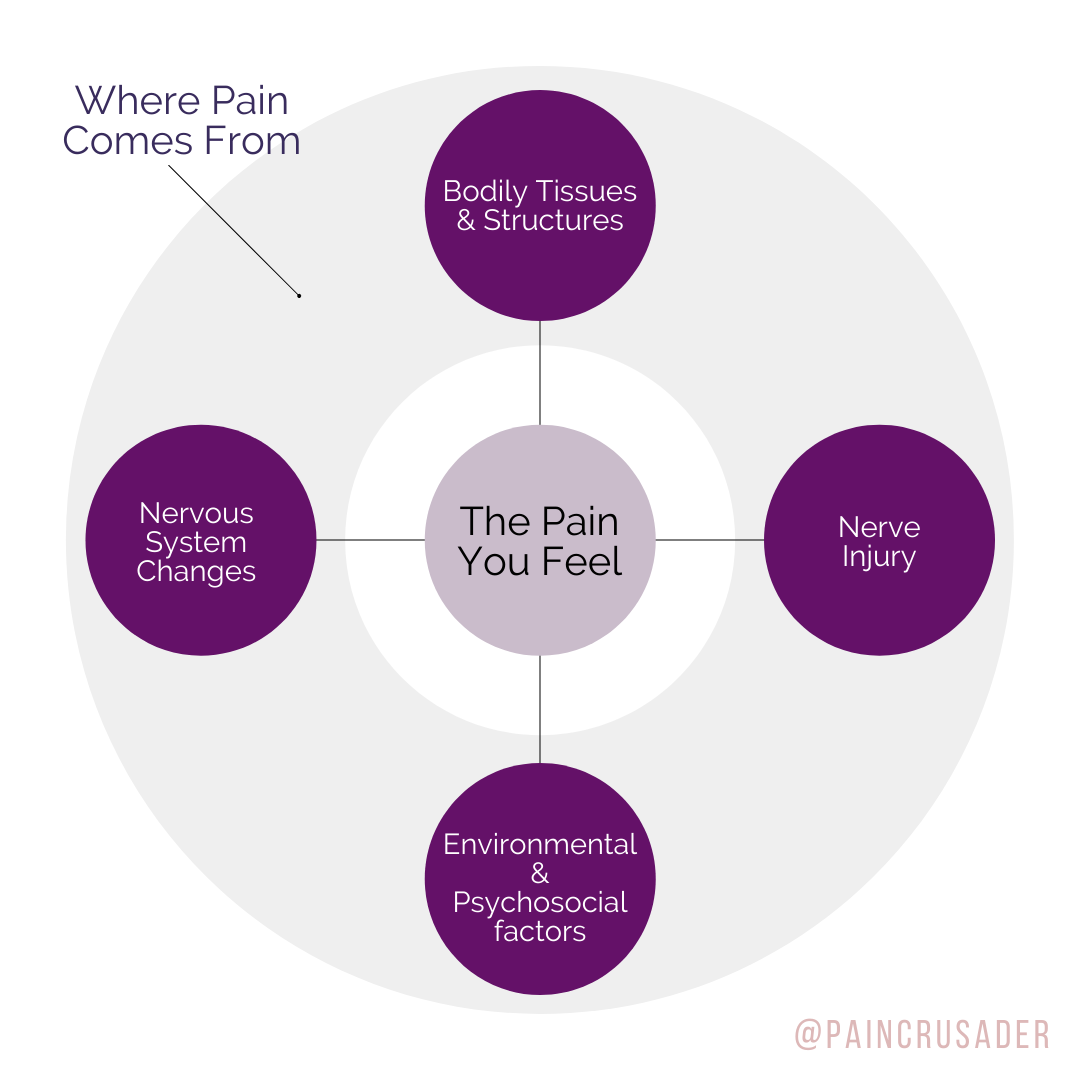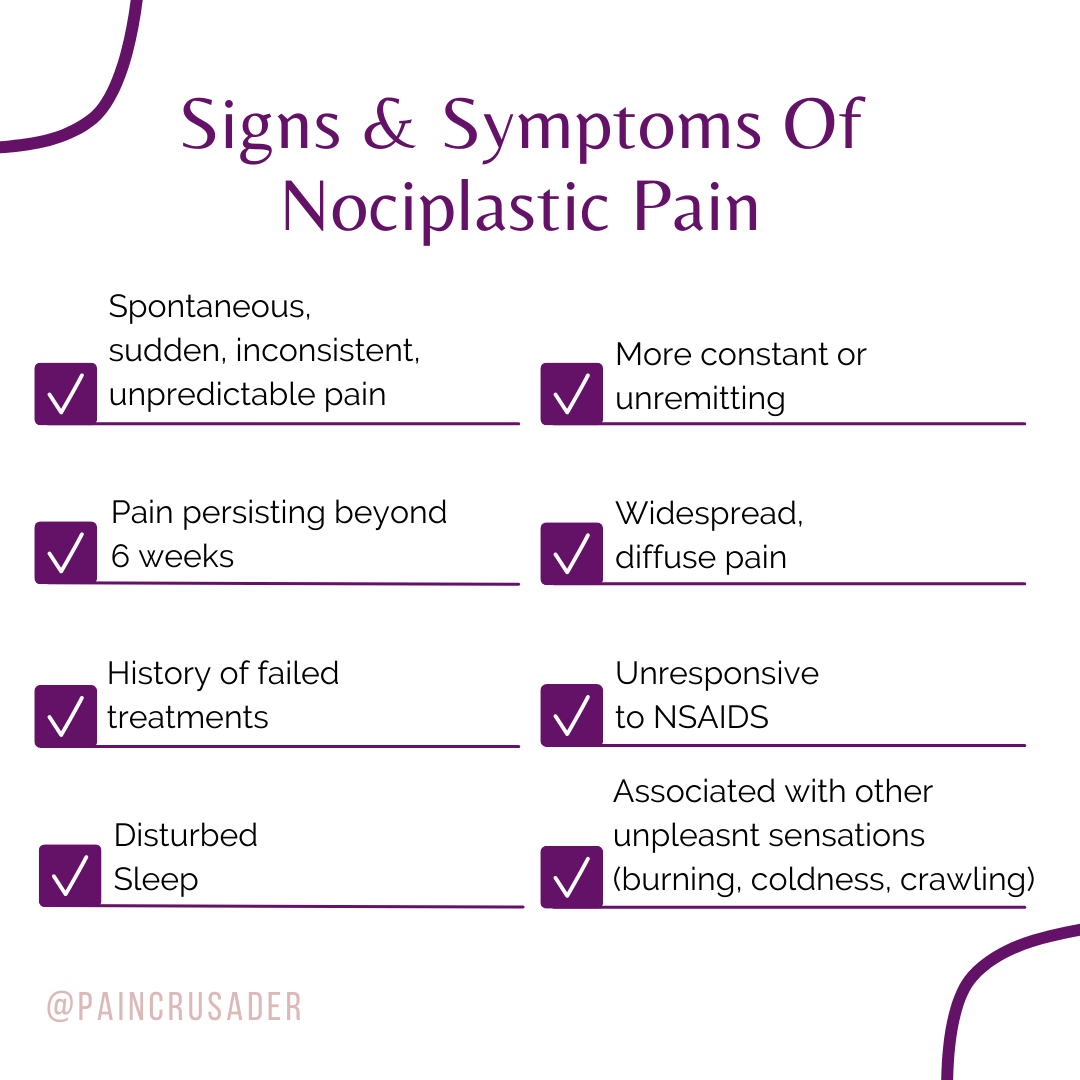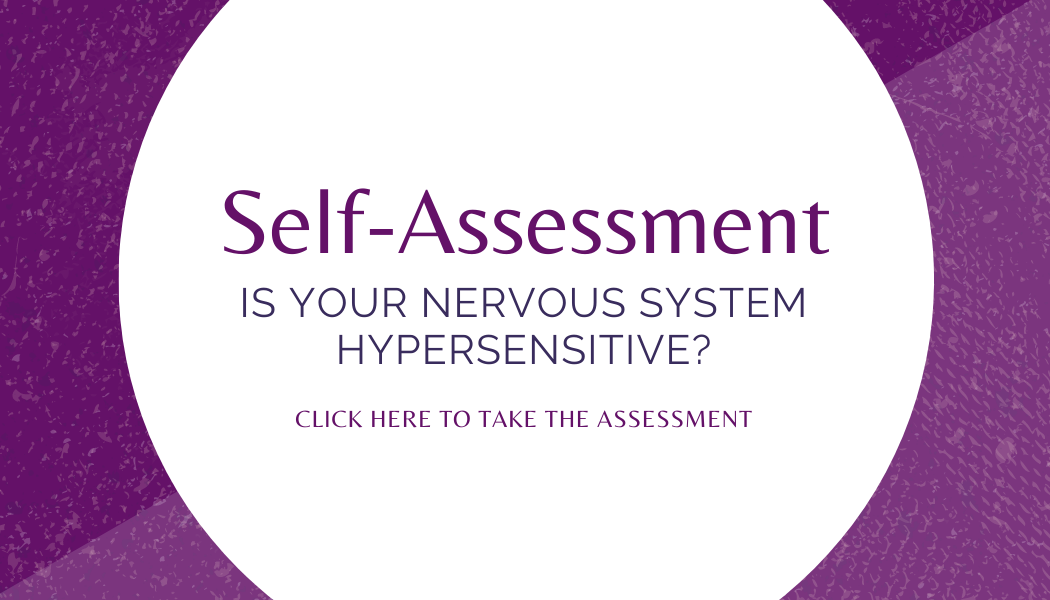What is Nociplastic Pain & How Can You Tell If You Have It?

Chronic pain is difficult to diagnose
Changes in the nervous system are a relatively new discovery in the world of chronic pain. These changes are called "nociplastic changes" and they can lead to nervous system hypersensitivity.
Nociplastic pain is often incorrectly classified as neuropathic pain (pain caused by injury or damage to the nerves) or psychosomatic pain. While all pain is influenced by mental health and influences mental health, nociplastic pain is not a mental health disorder. It is not psychosomatic. It is not all in your head.

Even when pain isn't being incorrectly categorized as psychosomatic, it's still often mislabeled as either musculoskeletal, also called "nociceptive", or neuropathic (associated with nerve injury or damage) in nature.
Pain can be either musculoskeletal or neuropathic but it almost always has a nociplastic component as well. In other words, even if there is an injury to the tissue or the nerve, there's usually also some change in the nervous system that contributes to pain. Sometimes those nervous system changes are the dominant source of pain, which is what we would classify as nociplastic pain.

Nociplastic pain is difficult to diagnose because there is no one specific test that can rule in it's presence. But thankfully, there are ways to test for nociplastic changes and treatment options are available.
In this blog, we will discuss various ways to evaluate for nociplastic pain and suggest a quick and easy method to screen for nociplastic pain.
Brain Scans
One way to test for nociplastic changes is through the use of a functional MRI (fMRI). This type of scan looks at how active certain areas in the brain are. If you have nociplastic pain, there will be increased activity widespread throughout the pain. Unfortunately, this type of testing is really only done in the research setting.
The good news is, however, there are other ways to test for nociplastic changes.
Tactile Acuity Testing
One way is by evaluating your tactile acuity. Your tactile acuity is how well you can feel things. Most people with chronic pain have decreased tactile acuity to some degree. This affects the brain's ability to correctly interpret information it receives from your body. The brain tries to fill in the gaps of missing information. Tactile acuity can be tested in various ways including doing a 2-point discrimination test or a sharp dull test. The good news is, there are things you can do to improve your tactile acuity that will also help decrease pain.
Hyperalgesia Testing
Another way is by testing for hyperalgesia. Hyperalgesia occurs when a person feels an increased amount of pain from touch or pressure that should not cause pain at all or only mild discomfort. Hyperalgesia can be measured by doing a pressure algometry test. This test uses a device called an algometer to measure the amount of pressure needed to cause pain. Typically people with chronic pain will have a lower pressure pain threshold widespread throughout the body.
Questionnaires
Most often the easiest way to evaluate for the presence of nociplastic pain is by analyzing the signs and symptoms.
Signs and symptoms of nociplastic pain can include chronic pain that has no identifiable reason as to why it started, is widespread, that can appear suddenly with an unpredictable pattern, that is more constant or unremitting, is unresponsive to traditional treatment methods, is unresponsive to NSAIDS, is associated with disturbed sleep, and is associated with other unpleasant sensations including burning, coldness, or crawling.
Nociplastic pain can also often be accompanied by fatigue, reduced activity tolerance, brain fog, depression and/or anxiety and is also often associated with other more systemic symptoms including gut dysfunction, reproductive system dysfunction, and immune system dysfunction.
When these symptoms are present and the patient has not responded to treatments that address structural or mechanical injuries/faults, it is very likely that the pain has a nociplastic component.

Classifying signs and symptoms as nociplastic is made easier through the use of questionnaires. These questionnaires ask questions about your chronic pain, including how it affects your daily life. There are many questionnaires available that are well studied, my favorite one is called the Central Sensitization Inventory.
One quick and easy way to find out if you have nociplastic pain due to nervous system hypersensitivity is to take the free self-assessment on my website. This assessment is based on the well-studied, Central Sensitization Inventory mentioned above, and will suggest what you can do to manage pain of this nature.
While it can be difficult to classify nociplastic pain with diagnostic tests and measures, it may be worth trying treatments that focus on retraining the nervous system, even if you don't have an official diagnosis - especially if your pain has persisted even after trying traditional treatments. There is no harm in trying the treatments for nociplastic pain because they have little to no side effects or risks.
Take control of your pain – start by taking this self -assessment and see if your pain could be classified as nociplastic pain.
Get Pain Articles & Neuroscience Nuggets Sent To Your Inbox.
Subscribe to my Blog!










